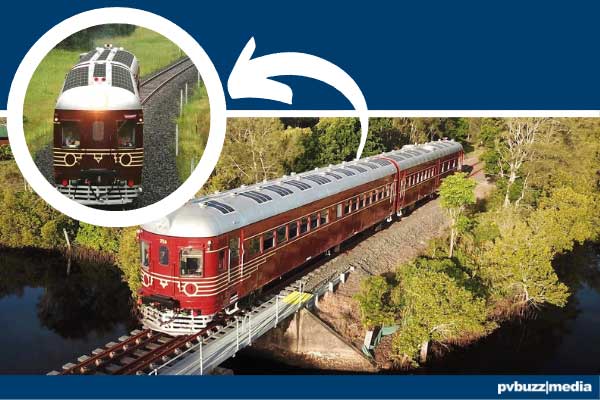As the world intensifies its efforts towards carbon neutrality, innovative solutions are emerging to transform traditional transportation systems.
One such breakthrough is the advent of solar-powered trains, which present a promising avenue for sustainable rail travel. With the ability to harness solar energy and contribute to the grid, these trains offer an environmentally friendly alternative to conventional locomotives.
So, let’s explore the fascinating world of solar trains, highlighting the Byron Solar Train in Byron Bay, Australia, as a shining example of this transformative technology.
Harnessing Solar Energy for Rail Travel
The concept of solar-powered transportation is not new.
From solar-powered homes and cars, the potential of harnessing the sun’s energy for train travel has gained considerable attention. By leveraging specially designed curved solar panels placed on the train’s roof, solar trains can generate electricity directly from the sun.
These panels are strategically positioned to maximize exposure to sunlight throughout the train’s journey, ensuring a consistent power supply.
The Byron Solar Train: A Pioneering Example
The Byron Solar Train, located in the picturesque coastal town of Byron Bay, Australia, stands as the world’s first and only solar-powered passenger train.
This innovative rail system has become a popular attraction, offering both locals and tourists an eco-friendly mode of transportation. Adorned with curved solar panels, the train not only powers itself but also contributes 77% of its energy output back into the grid.
Recognized Excellence in Engineering
The Byron Solar Train’s groundbreaking design and remarkable contributions to sustainable transportation have earned it prestigious accolades, including the Engineering Excellence Award. This recognition underscores the train’s exceptional engineering and the positive impact it has had on the community and the environment.
Decentralizing Rail Systems: A Pathway to Sustainability
As governments worldwide strive to achieve carbon neutrality, the decentralization of rail systems has become a key consideration. Solar trains offer a potential solution in this endeavor, enabling rail travel to become more sustainable and less reliant on fossil fuels. By incorporating solar-powered locomotives into existing rail networks or developing new lines powered by renewable energy, countries can significantly reduce carbon emissions and contribute to a greener future.
Benefits and Challenges Ahead
Solar trains come with a range of benefits that extend beyond environmental advantages.
Reduced operating costs, minimal noise pollution, and increased energy efficiency are among the advantages associated with this technology. However, challenges such as initial setup costs, limited energy storage capacity, and the need for favorable weather conditions remain obstacles that require further exploration and refinement.
Solar-powered trains represent an exciting innovation in the pursuit of sustainable transportation solutions.
The success of the Byron Solar Train showcases the potential of harnessing solar energy for rail travel while contributing to the grid.
As governments worldwide intensify their efforts to combat climate change, solar trains offer a viable pathway towards decentralized and eco-friendly rail systems. By investing in research and development, addressing technical challenges, and promoting renewable energy adoption, the dream of a solar-powered future for rail travel can become a tangible reality.













Comments